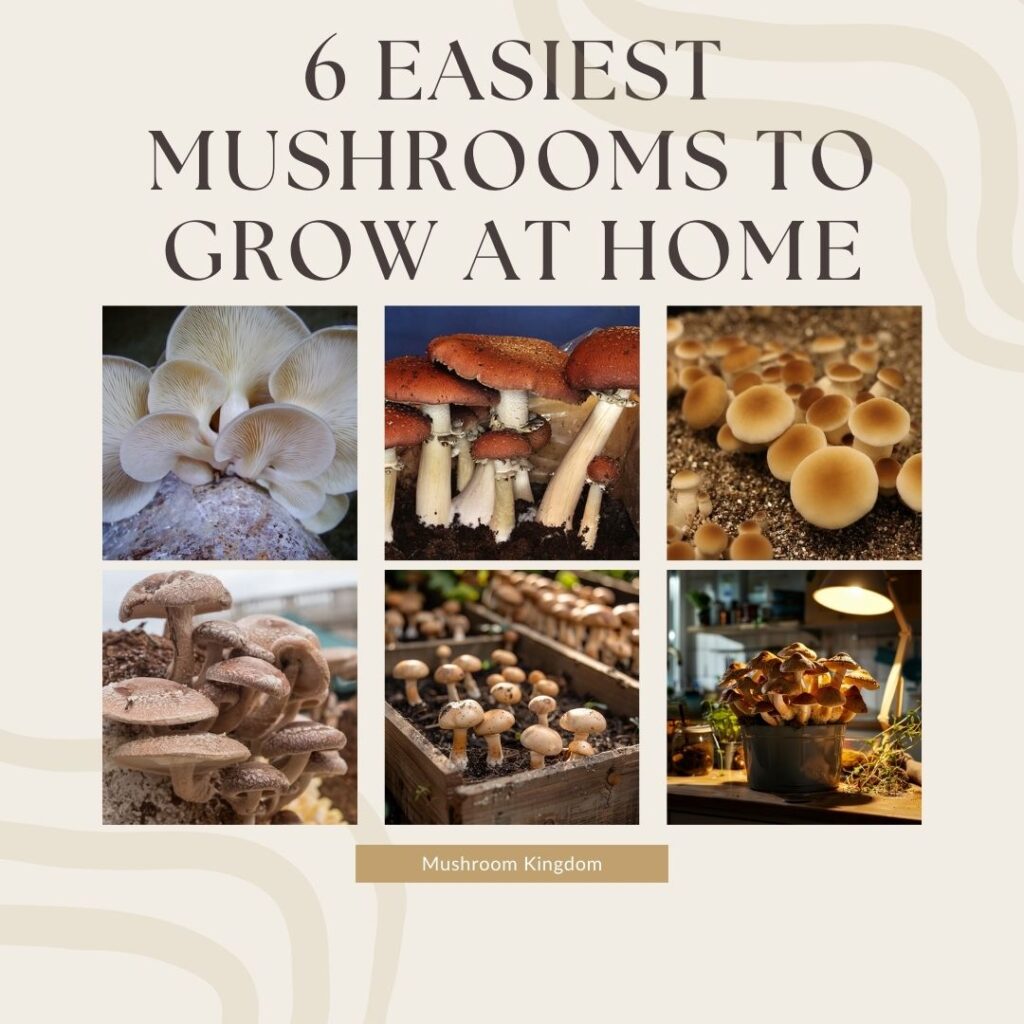Foraging for wild edible mushrooms is a tradition enjoyed by nature enthusiasts and food lovers alike. The thrill of uncovering these hidden treasures in the forest, along with the satisfaction of cooking up a delicious meal with your finds, makes mushroom foraging a rewarding experience.
However, it’s essential to proceed with caution, as not all mushrooms are safe to eat. Before going into the wild, be sure to read our article on foraging tips for beginners to make your adventure safe and comfortable.
In this guide, we’ll explore 10 edible mushrooms commonly found in the wild, along with tips for identification and harvesting.
1. Chanterelles (Cantharellus spp.)
Chanterelles are known for their vibrant golden-yellow colour and distinctive funnel-shaped caps. They emit a fruity aroma and have a delicate, slightly peppery flavour which makes them probably the most popular edible mushrooms among the enthusiasts.
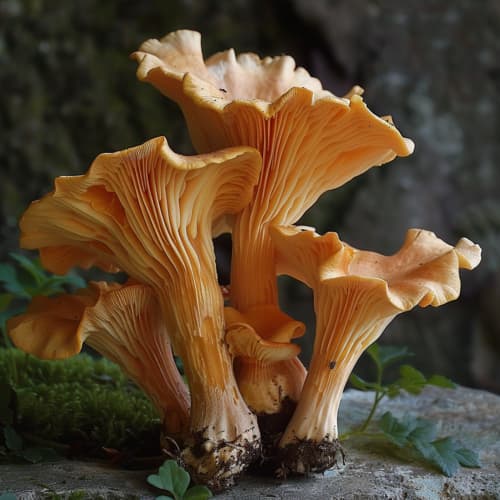
These sought-after mushrooms typically thrive in forested areas, especially near coniferous and hardwood trees, throughout the summer and autumn seasons.
When foraging, keep an eye out for their distinctive trumpet-shaped caps and ridged undersides, which are key identifiers. It’s essential to differentiate them from false chanterelles, which may look similar but lack the distinct ridges and fruity scent.
So, whether you’re strolling through the woods or browsing at a market, chanterelles are a culinary treasure worth seeking out for their unique flavor and vibrant appearance.
2. Morels (Morchella spp.)
Morels have a unique honeycomb appearance with a hollow stem. They range in colour from pale cream to dark brown and have a nutty, earthy flavour.
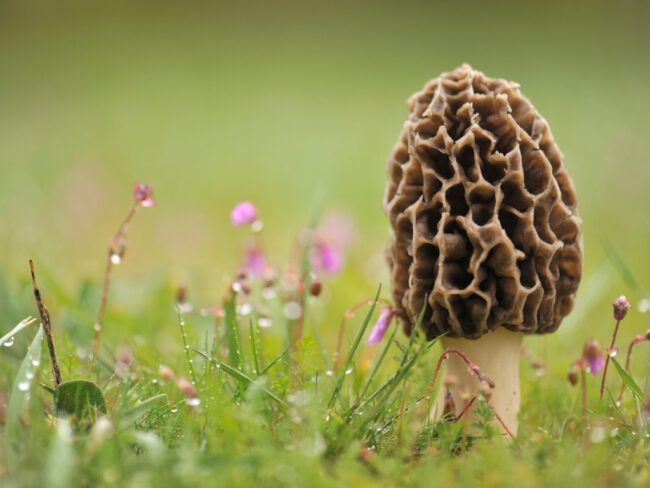
Morels thrive in wooded areas, particularly after spring rains. Look for them near decaying organic matter, such as fallen trees or burned areas.
True morels have a pitted or honeycomb-like surface, distinguishing them from false morels, which may have a wrinkled or brain-like appearance.
3. Porcini (Boletus edulis)
Also known as king boletes, porcini mushrooms have a thick, meaty cap and a rich, nutty flavour. They range in colour from brown to reddish-brown.
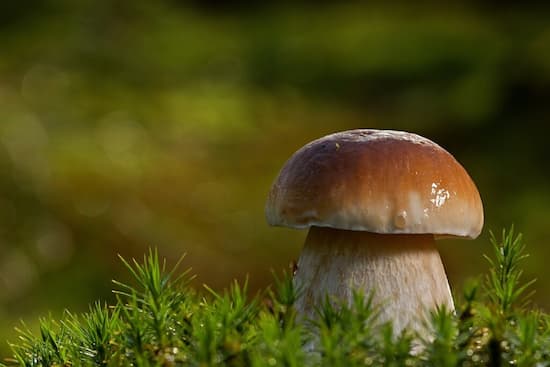
Porcini mushrooms can be found in both deciduous and coniferous forests, often near oak, chestnut, or pine trees, during the summer and fall.
Look for the characteristic stout stem and sponge-like pores on the underside of the cap. Avoid mushrooms with a slimy or discoloured cap, as they may be past their prime.
4. Lion’s Mane (Hericium erinaceus)
Lion’s Mane mushrooms have a distinctive cascading mane or pom-pom appearance with long, dangling spines. They have a delicate taste reminiscent of seafood.
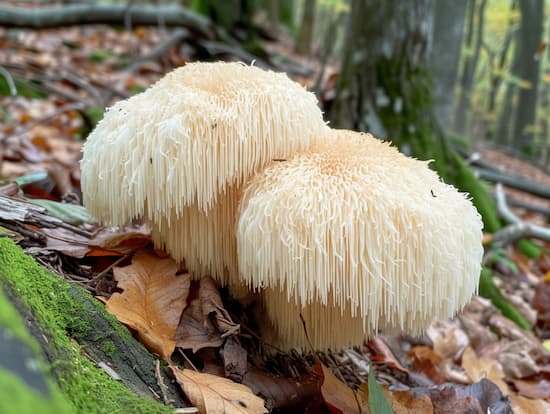
These mushrooms are typically found on hardwood trees, such as oak or maple, during the late summer and fall months.
Look for the white, globe-shaped fruiting bodies with long, shaggy spines. Be cautious of false lion’s mane mushrooms, which may have a similar appearance but lack the characteristic flavour.
5. Maitake (Grifola frondosa)
Also known as hen-of-the-woods, maitake mushrooms have overlapping clusters of fan-shaped caps with meaty texture. They have a robust, earthy flavor and a meaty texture, making them a popular choice for cooking in various dishes.
These mushrooms are not only prized for their taste but also for their potential health benefits. Maitake mushrooms are believed to have medicinal properties and are used in traditional medicine practices in some cultures.
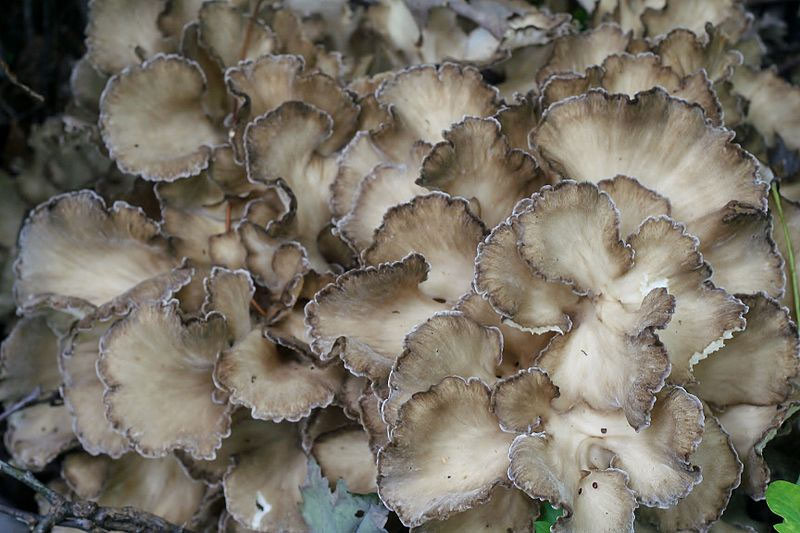
Maitake mushrooms grow at the base of oak trees and you can find them in both deciduous and coniferous forests during the fall months.
Whiile foraging, search for the distinctive clustered growth pattern and frilly edges of the caps. Be sure to avoid mushrooms with slimy or decaying areas.
6. Oyster Mushrooms (Pleurotus spp.)
Oyster mushrooms are among the most popular edible mushrooms. They have a delicate flavour and a flat, oyster-like shape with a white to light brown colouration. Without a doubt, it is the most popular mushroom among the foragers.
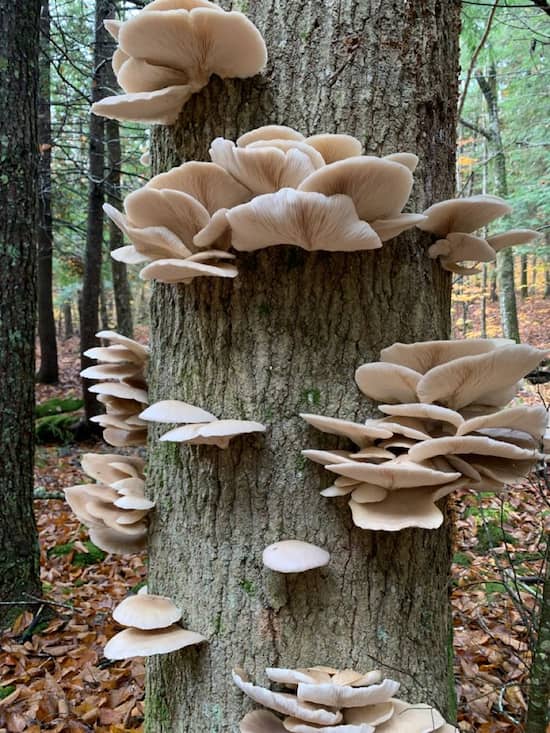
You can find Oysters everywhere. In genera, the often grow on dead or dying trees, particularly beech, oak, and aspen, throughout the year.
They are easy to spot too. Look for the characteristic oyster-shaped caps with a smooth, slightly wrinkled surface. Be cautious of false oyster mushrooms, which may have a similar appearance but lack the characteristic flavour.
7. Shaggy Mane (Coprinus comatus)
Shaggy Mane is a popular edible mushroom that has distinctive white caps covered in shaggy scales that turn black as they mature. They have a delicate flavour and a short shelf life.
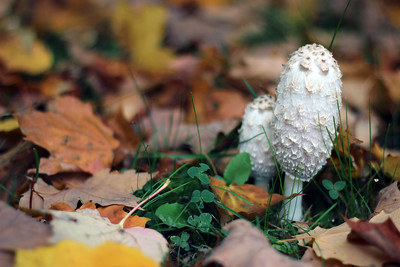
Shaggy typically grows in grassy areas, particularly after rainfall, during the late spring and early fall.
Look for the tall, cylindrical shape with white caps covered in shaggy scales. Harvest them when the caps are still white and firm, as they quickly turn black and become inedible.
8. Chicken of the Woods (Laetiporus sulphureus)
Chicken of the Woods mushrooms have a bright yellow or orange colour and a texture similar to chicken when cooked. They have a mild, lemony taste.

In the wild, chicken of the woods grows on hardwood trees, particularly oak, during the summer and fall months. You need to have just a single memory of how it looks to spot it while foraging. Avoid mushrooms with a slimy or decayed appearance.
When properly prepared, Chicken of the Woods has a mild, slightly sweet flavor reminiscent of chicken, hence its name.
9. Black Trumpet (Craterellus cornucopioides)
Also known as the horn of plenty, black trumpet mushrooms have a delicate, trumpet-shaped body with a rich, earthy flavor and hints of black truffle.

Black trumpet mushrooms are often found in moist, wooded areas, particularly near oak and beech trees, during the late summer and fall months.
Look for the dark brown to black, trumpet-shaped caps with a smooth surface. Be cautious of false black trumpet mushrooms, which may have a similar appearance but lack the characteristic flavor.
10. Hedgehog Mushroom (Hydnum repandum)
Hedgehog mushrooms have distinctive spiky undersides instead of gills, making them easy to identify. They have a mild, nutty flavour and a firm texture.
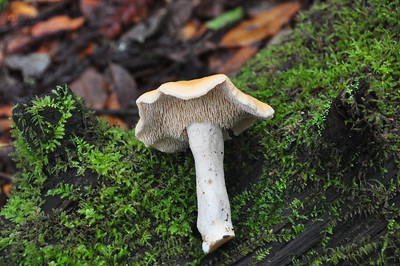
These mushrooms are commonly found in deciduous and coniferous forests, particularly during the late summer and fall months.
Harvest them when they are young and firm, as older mushrooms may become tough and bitter.

